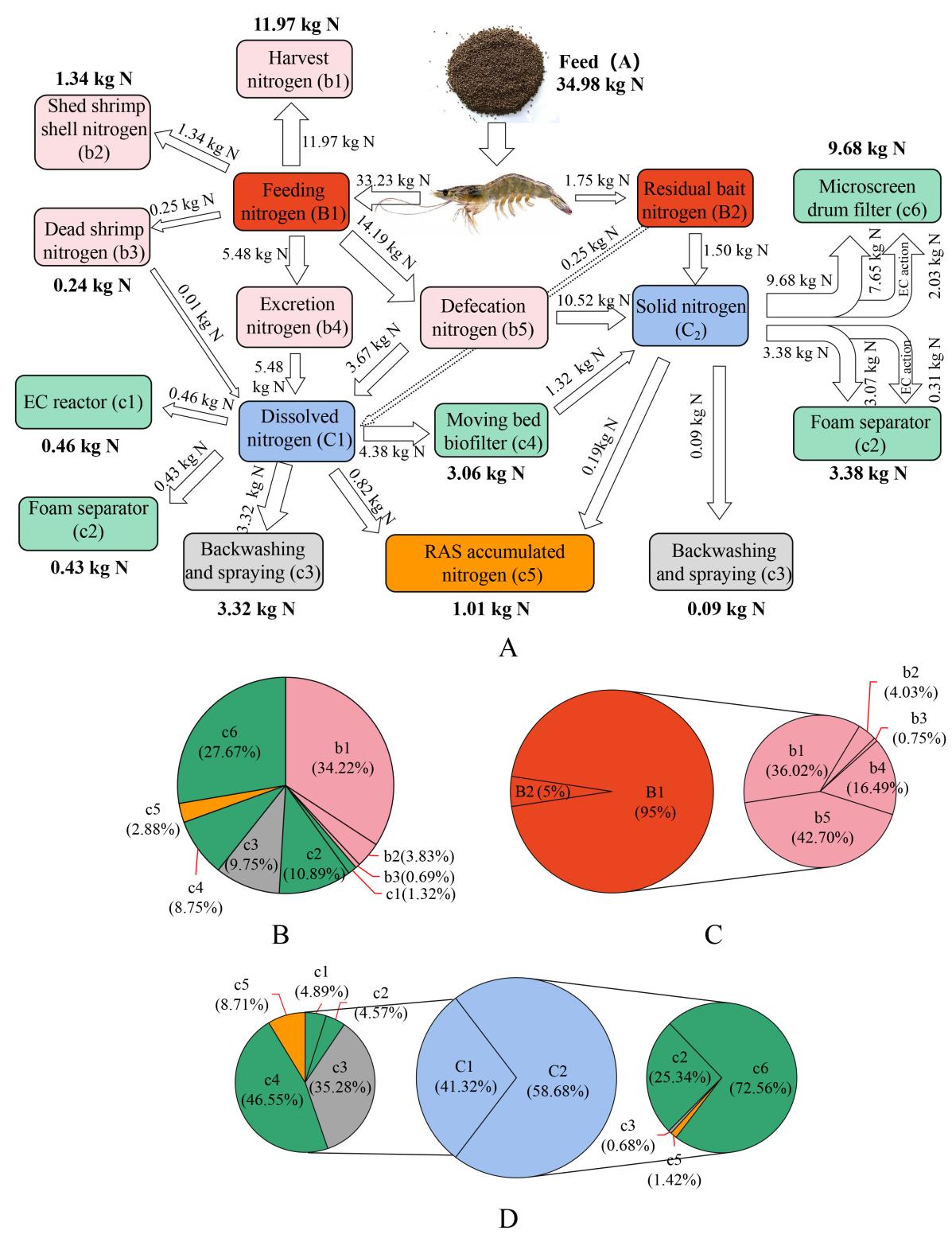In aquaculture, scientific introduction of nitrogen is necessary to achieve economic production and prevent environmental pollution.
Litopenaeus vannamei (L. vannamei) is an important species in the aquaculture industry, providing humans with a large amount of high-quality proteins. Therefore, it is of scientific and practical value to study the nitrogen budget and recovery during the cultivation of L. vannamei.
Recently, a research team led by Prof. SUN Jianming from the Institute of Oceanology of the Chinese Academy of Sciences (IOCAS) studied the utilization, migration, transformation, and accumulation of input nitrogen in the L. vannamei recirculating aquaculture system (RAS) between aquaculture objects and each water treatment unit.
The study was published in Journal of Water Process Engineering on Oct. 26.
The researchers used a green and efficient water treatment technology called electrocoagulation (EC) to improve the performance of the L. vannamei RAS.
Moreover, they analyzed the application of Chlorella vulgaris in nitrogen recovery from RAS solid waste and aquaculture tail water. They used a Chlorella vulgaris culture system to recycle the waste nitrogen produced during aquaculture of L. vannamei, and the nitrogen recovery rate was more than 80%. Using microalgae to recover nitrogen from aquaculture tail water not only improved resource utilization, but also protected the ecological environment.
"We systematically studied the migration and transformation law of Nitrogen in RAS, and formulated a recovery strategy for waste nitrogen, which is of great significance for the green and healthy development of the aquaculture industry," said XU Jianping, first author of the study.
"The results comprehensively explained the flow characteristics of Nitrogen element in large-scale recycling aquaculture, and provided a data support for comprehensive understanding of RAS and targeted improvement of water treatment equipment," said Prof. SUN, the corresponding author of the study.
The work was supported by the National Key Research and Development Program of China.








